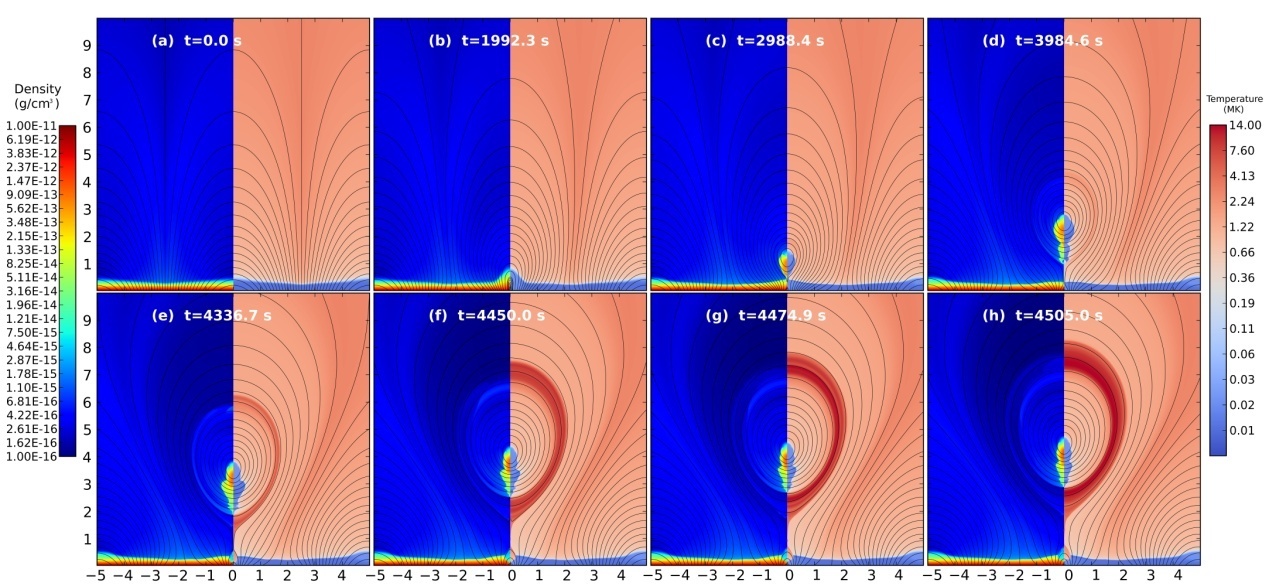Converging flows toward the magnetic reversal line can carry the opposite-polarity magnetic fields to the magnetic reversal line and drive magnetic reconnection in the photosphere or above. A 2.5-dimensional magnetohydrodynamics simulation, which depicts the whole process of FR formation and eruption driven by converging motion, is conducted. In this simulation, a converging motion toward the magnetic reversal line is imposed at the footpoints of an arcade-like linear force-free magnetic field, which carries the opposite-polarity magnetic fields to the magnetic reversal line and drives magnetic reconnection there, leading to the formation of an FR by magnetic reconnection. As the reconnection proceeds, the FR grows in size, and then erupts to form a CME. A prominence embedded in the FR gets formed by the levitation of chromospheric material during the process. There is a current sheet developing underneath the FR. The current sheet extends in length when the FR moves upward, developing in a Sweet–Parker style. Resistive instabilities are invoked after the aspect ratio of current sheet exceeds a threshold, which is 76.9 in this simulation. Then the unsteady bursty regime of reconnection starts, and a flare arcade forms below the current sheet. The simulation covers a wide range of scales, from the small-scale current sheet structure to the large-scale eruption process. 
By with ZHAO Xiaozhou Figure 1. Evolution of density (left) and temperature (right) in the x–y plane with magnetic field lines (solid black lines) overlaid, indicating the formation and eruption process of the FR. The axis scales are in units of 10 Mm. The phase transition from the initiation phase to the acceleration phase of the kinematic properties, i.e., height, speed and acceleration, of the FR was observed. Results show that the dynamical states of the FR are different in the initial phase and the acceleration phase. The FR undergoes a series of quasi-static states in the initiation phase. In the acceleration phase, the FR is driven by the Lorentz force and the impulsive acceleration occurs. The underlying physical reason for the phase transition is the change of the reconnection mechanism in the current sheet underneath, from the Sweet-Parker to the unsteady bursty regime of reconnection. The snapshots in Figure 1 capture the evolution of the density (left half) and the temperature (right half) with magnetic field lines (solid black lines) overlaid at eight instants of the evolution. Figure 2 illustrates the mass density distribution in the region, depicting the prominence formation process and the current sheet evolution. This work by Xiaozhou Zhao (PMO), Chun Xia (KU Leuven), Rony Keppens (KU Leuven) and Weiqun Gan (PMO) was published in ApJ, link: https://doi.org/10.3847/1538-4357/aa7142 |
